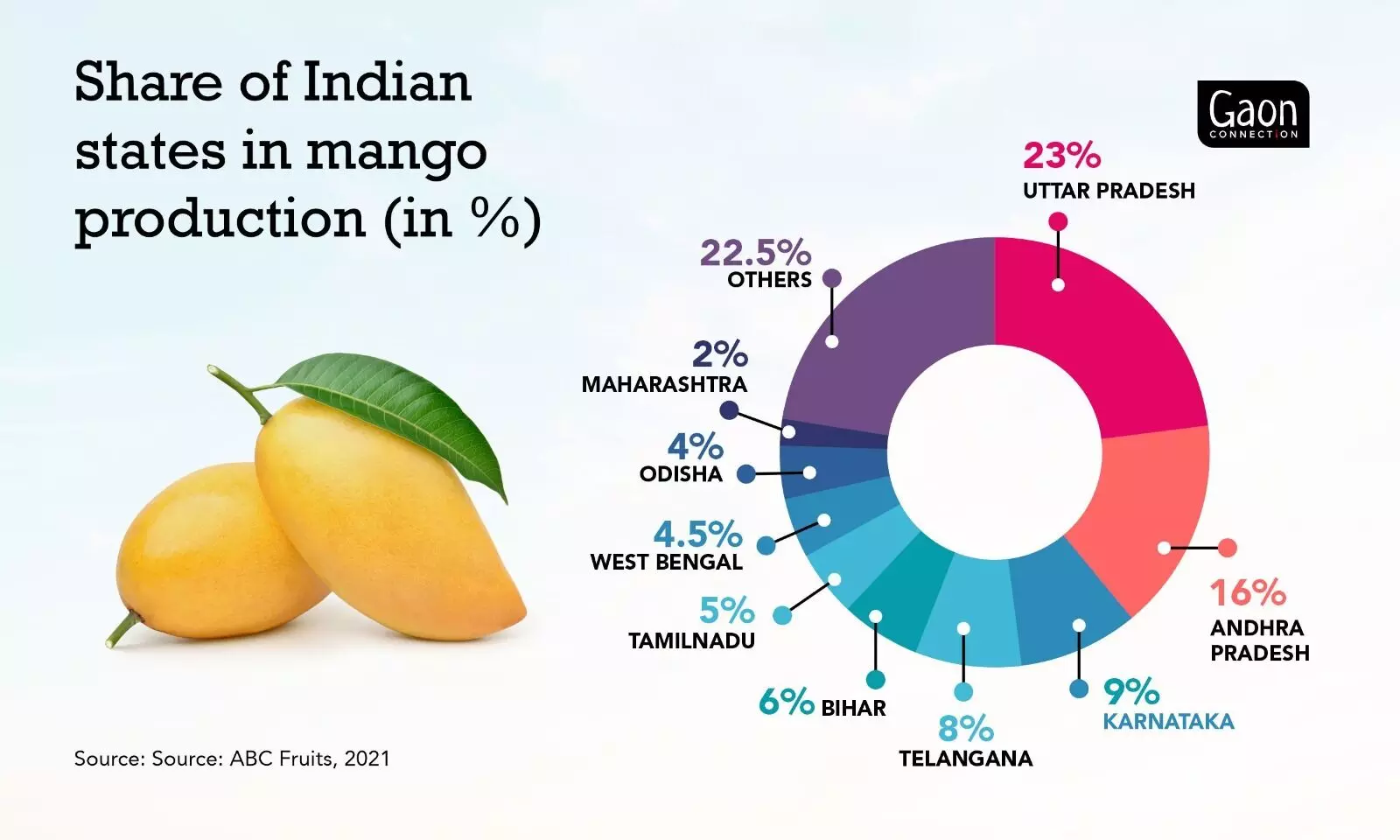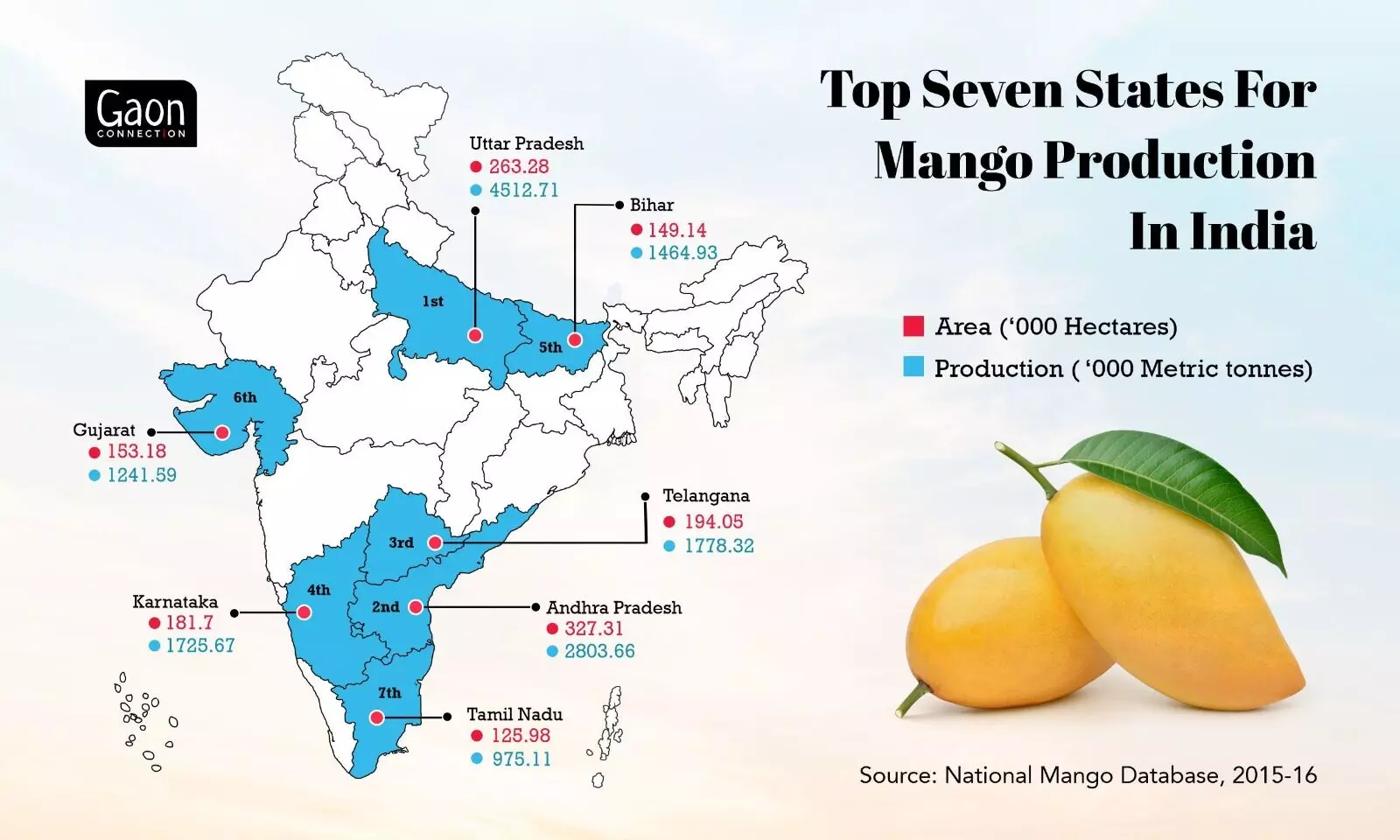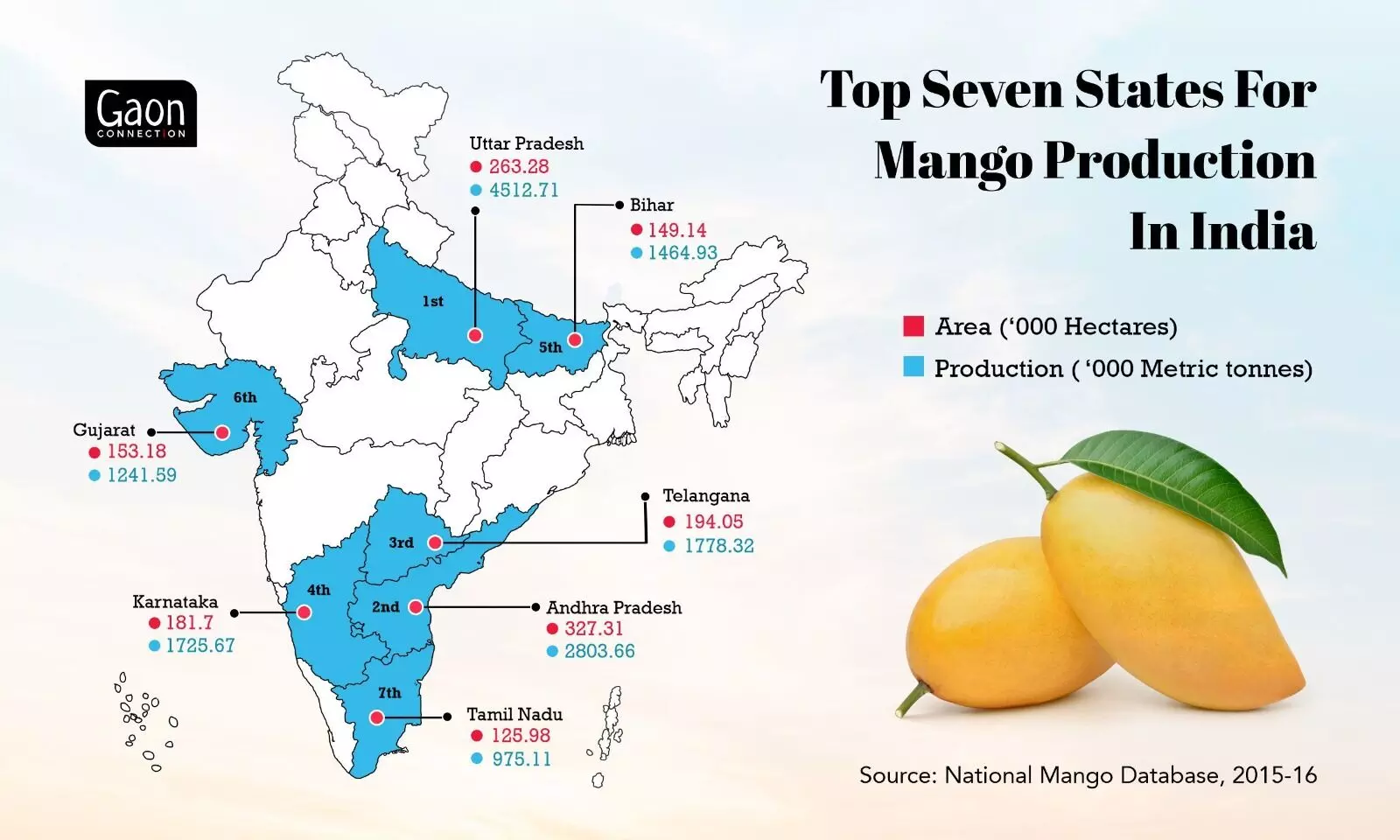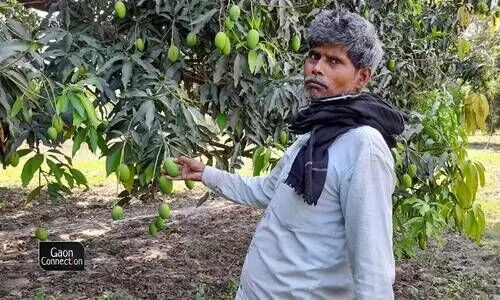Unnao, Uttar Pradesh
Mango lovers in the country may not have very much to look forward to this year. The king of fruits may not be that plentiful, worry farmers in Unnao in Uttar Pradesh, which is India’s top mango producing state.
Unnao district is known for its multiple varieties of mangoes, but since January this year, unexpected rainfall, unprecedented and unseasonal heat, and then sudden drop temperatures, have taken a toll on the mango crop.
“It is now all in the hands of the almighty. Whatever has to happen will happen,” Yogendra Das, from Jhabba Kheda village in Safipur tehsil of Unnao district, told Gaon Connection. “When the mango flowers blossomed, they looked good and I looked forward to a bountiful harvest, but just when the trees flowered in March, we had unprecedented heat and the flowers all dried up,” the 65-year-old farmer, who owns four bighas of an orchard, said.
“Many of the delicate flowers withered. The few that survived are what will give the mangoes and the yield will be less,” he complained. Das said his expenditure was Rs 25,000 a bigha, and all he is praying for is a recovery of that cost. Profits from the mangoes seem very unlikely, he said. (1 bigha = 0.25 ha)
Mango farmers in Unnao are a worried lot. The early arrival of heatwaves in March affected mango flowering, and now unseasonal rains in April and early May have added to their woes. If the heat again sharply rises after the rains, there is fear of the mangoes breaking off even before the seed inside them have fully formed and they have ripened.
Last year also, the sudden rise in temperature in the month of March had affected the mango crop. March 2022 was recorded as the hottest ever March month in India in the past 122 years. Any change in mango production in India becomes international news as almost half of the world’s mangoes are produced in India.
Also Read: Mango production in India to be hit due to early arrival of heatwaves
About ten kilometres away from Jhabba Kheda village lies Darauli, where Ram Jeevan Tiwari owns a mango orchard of about eight bighas.

Last year also, the sudden rise in temperature in the month of March had affected the mango crop. March 2022 was recorded as the hottest ever March month in India in the past 122 years.
“The rains damaged the flowers and those that remained suffered pest infestation,” the 62-year-old farmer said. Pesticides did not help much, but the rains in May did wash away some of the pests, he added. “But this unpredictable heat and rains are taking their toll on the mangoes, and affecting their quality. And the sudden rains and rise in temperatures affect the yield,” Tiwari told Gaon Connection.
Erratic weather affecting mango production
“The vagaries of weather have had a grave impact on mango cultivation,” Jai Kumar Yadav, scientist at the Krishi Vigyan Kendra in Dhaura, Unnao, told Gaon Connection. “At the time of the blooming of the mango flowers there should not be too much heat, but there was this year and the flowers withered,” he said.
According to the scientist, there was a profusion of flowering this year but the temperature rose more than 30℃ in March which was a disaster. Even in February the temperature was much more than what it should have been, he said.
“The flowers that withstood the heat and survived had to face the onslaught of rains in late March, and many of them perished in that. Then there was the pest infestation because of the wet weather,” the scientist said.
Also Read: Getting Hammered from Pole to Pole and Tropic to Tropic

Any change in mango production in India becomes international news as almost half of the world’s mangoes are produced in India.
The misery did not let up for the farmers because those who had sprayed pesticides, the pesticides combined with the heat, once again ruined the crop, Yadav explained.
Das from Jhabba Kheda village said he had observed how the weather patterns were getting more and more erratic for the past few years. “It is much hotter now. Also, the mangoes seem more prone to pests. There was a time the mangoes would ripen naturally without any artificial aid. I had to spray the mangoes thrice this time,” he said.
According to the farmer, the yield of mangoes will be considerably less than before. He hoped somehow he would be able to recover his investment on the crop.
Meanwhile, the recent rains have brought some relief to farmers like Raghuvir Singh who said his trees suffered considerable infestations this year. “The rains brought some relief and saved those fruits that had barely survived the scorching heat, otherwise I would have lost everything,” the 74-year-old told Gaon Connection.
Singh owns two bighas of mango orchards. But, he too said that the pest infestations had increased, and the pesticides they used were becoming less and less effective. The increased use of pesticides had also increased their expenses, while bringing down the yield, the farmer from Unnao pointed out.
About mango cultivation
Data shows that India produces almost half of the world’s mangoes with annual output touching 20.26 million tonnes during the 2019-20 crop year (July-June). Almost 1,000 varieties of the fruit are grown here, but only 30 are used commercially.
As per the Indian Horticulture Database, which is maintained by the Indian Agricultural Research Institute (ICAR), Uttar Pradesh is the top producer of mango in the country followed by Andhra Pradesh, Telangana, Karnataka and Bihar.

Five blocks in Uttar Pradesh’s Unnao district — Safipur, Hasanganj, Miyaganj, Bangarmau and Auras — are known as the mango belt. Mangoes are the major crop in this area and the economy here depends almost entirely on mango production.
India’s mango exports are on the rise.

Exports of fresh mangoes from India increased from 20,302 tonnes in 1987-88 to 46,789.60 tonnes in 2019-20, as noted by the Ministry of External Affairs.
But this year seems tough for the mango farmers of Uttar Pradesh. The prognosis is not good for mangoes, Yadav, the KVK scientist said. “The changing climate patterns have caused considerable damage and losses to the mango farmers this year,” he said.

Also Read: As Spring Goes Missing




















